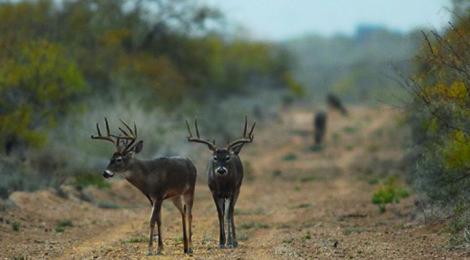
Mother Nature — The Ultimate Wildlife Manager
What deer hunters and game managers can expect during this exceptional year of plenty.
Story and photography by Bob Zaigin
While I prepare this manuscript in early June, we are experiencing a second spring-like season as the Nueces is flowing bank to bank for the first time in many years and waist-high grass abounds in adjoining pastures. The same weather pattern that inhibited rainfall in Texas had somehow shifted, relinquishing a significant amount of rain throughout the month of May.
More importantly it was widespread, allowing Texas to escape at least temporarily the horrendous grip of drought. As a result, range condition in South Texas is superb, and sportsmen are anticipating what they consider to be a banner year when it comes to antler size of those iconic Texas whitetails.
No question about it, the environmental stage is set for an incredible hunting season, but the answer remains just what can we expect and more importantly can these conditions be sustained.
Whitetail deer are much like the plants and brush upon which they depend. No one can visit the thorn scrub of South Texas during the summer and not wonder just how anything could survive in such a harsh, unforgiving environment. However, that desert-like environment can erupt into a virtual Garden of Eden following a light rain shower.
In South Texas, Mother Nature promises very little and relinquishes even less to this region’s inhabitants, thus only the strongest survive, plant or animal, and their longevity often depends on just how little rain they require. South Texas plants and animals have evolved over time by surviving on the bare essentials provided by rainfall, thus when it is abundant, they flourish. This is particularly true for those plants highly preferred by deer.
Now when one addresses range condition like we are presently experiencing, it’s important to remember that everything that glitters is not gold. The point is the brush country may be displaying a verdant, diversely rich vegetative community, but that seldom lasts for very long.
Much of the herbivory is composed of succulent plants that surface only under ideal moisture regimes like the one we experienced in May. These same water-filled plants may be palatable and selected by deer, but like fast food, just because it tastes good doesn’t mean that it is nutritionally beneficial. Their moisture component is high, but their nutrient content is generally limited.








